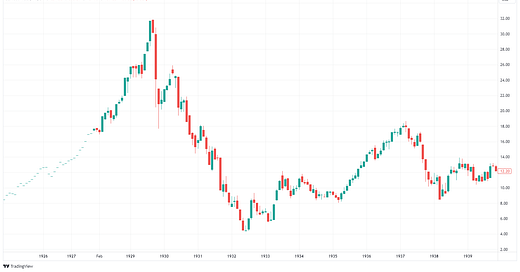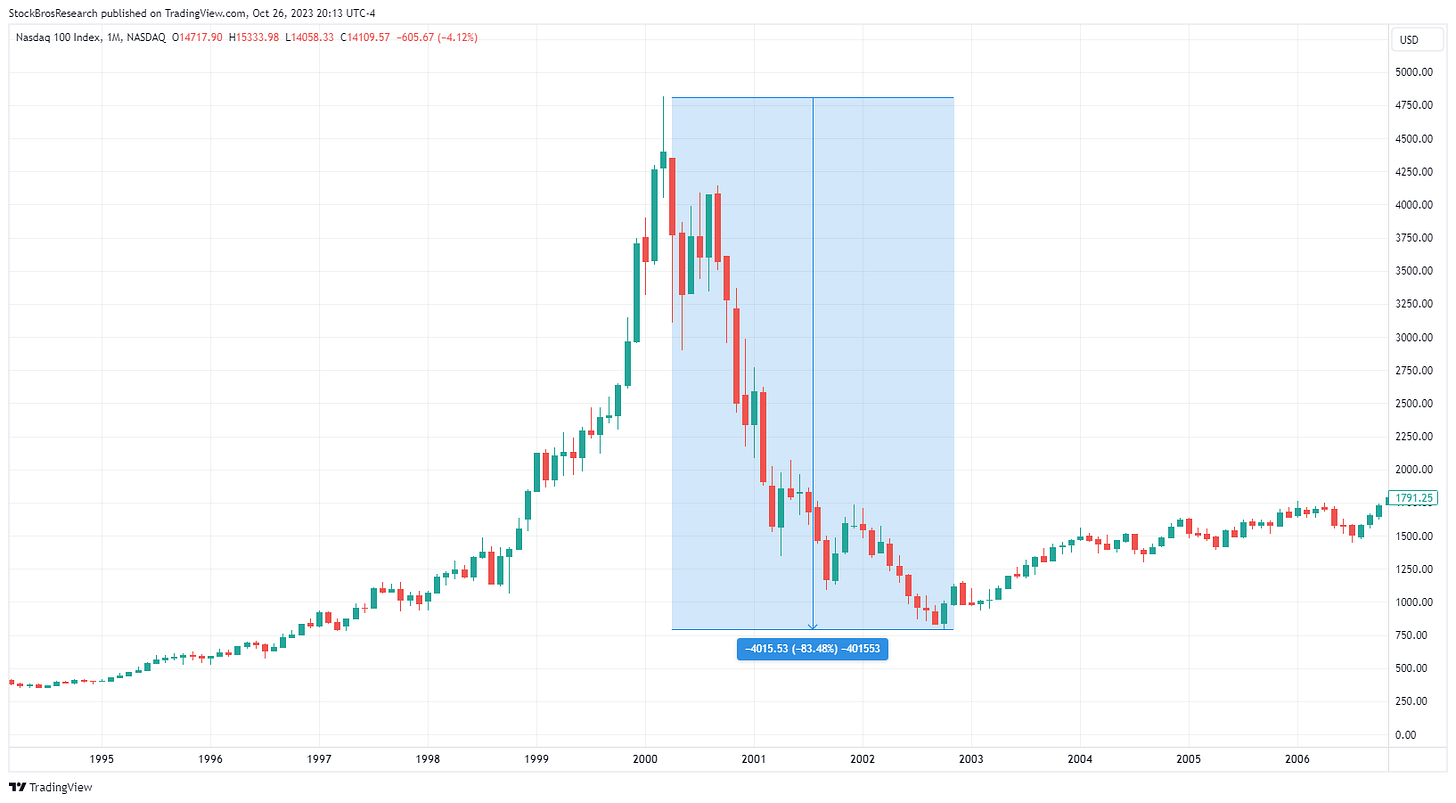Past Stock Market Crashes and Lessons Learned — 1929, 1987, 2000, 2008
The stock market, frequently seen as an economy's barometer, has undergone episodes where its rhythm became precariously irregular. By delving into the renowned crashes of 1929, 1987, 2000, and 2008, we can tease out intricate narratives highlighting human behavior, the role of technology, and inherent system weaknesses, crafting a tale both captivating and enlightening.
1. The Great Crash of 1929: When the Sky was the Limit for Both Buildings and Stocks
Backdrop: The Roaring Twenties represented a period of wealth, music, modern fashion, and... an unquenchable thirst for stocks. Stories abound of everyday individuals doling out stock advice, indicative of a market on the brink.
The Precipitous Decline:
September 3, 1929: DJIA reaches its zenith. Many, ensnared by hopefulness, believed the upsurge would never end.
Black Thursday (October 24): A gradual downtrend turns to panic selling. Major financial institutions tried to stave off the panic by acquiring stocks, but their efforts faltered.
Black Tuesday (October 29): A calamitous 25% dip ensues, erasing the wealth of countless individuals.
The Repercussions:
The market turmoil wasn't just an economic anomaly but permeated societal norms, ushering in the grim period known as the Great Depression. The images of soup lines, joblessness, and widespread hardship became all too common.
Lesson Learned: Euphoria, devoid of solid economic underpinnings, spells potential catastrophe.
S&P 500 Chart, 1929 stock market crash — Source: TradingView
2. Black Monday, 1987: The Day Technology Turned Foe
Backdrop: The 80s, characterized by its flash and technological novelties, saw the introduction of computers to the finance world, a move thought to be efficient but which ultimately sowed chaos.
The Disintegration:
Stock valuations surged consistently, partly due to "portfolio insurance," a digital trading strategy to minimize losses.
October 19, 1987: In the wake of a market dip, computers initiated heavy selling, propelling a self-reinforcing cycle. The DJIA plummeted 22.6% within hours, leaving the financial community reeling.
The Repercussions:
In a turn of events, the larger economy demonstrated tenacity. While recovery was rapid, the memories lingered.
Lesson Learned: Blind reliance on technology, without gauging its holistic implications, can invite disaster.
S&P 500 Chart, 1987 stock market crash — Source: TradingView
3. The Dot-Com Bubble Burst: Shattered Digital Dreams
Backdrop: The brink of the new millennium saw an influx of internet-driven firms or 'dot-coms'. This era's optimism inflated both hopes and stock evaluations of budding tech ventures.
Sequence of Events:
A surge in internet startups received disproportionate funding, even if they had no tangible profitability. Mere addition of “.com” to a firm's title could skyrocket its valuation.
The NASDAQ, tech-heavy, reached its pinnacle in March 2000 before a precipitous fall.
Numerous dot-com entities exhausted their resources and ceased operations, leading to significant investor losses.
The Repercussions:
The bubble's bursting triggered a sizable economic regression and paved the way for tech industry reformation. Enduring companies pivoted towards more tenable operational models.
The tech domain faced scrutiny, but robust entities rebounded, laying groundwork for future technological advancements.
Lesson Learned: Buzz and unwarranted speculation, without concrete business blueprints or income, can culminate in severe market setbacks.
Nasdaq 100 Chart, 2000 stock market crash — Source: TradingView
4. The Domino Fall of 2008: The Financial Fabric Unravels
Backdrop: The dawn of the 21st century witnessed U.S. housing prices skyrocket. Homes were no longer just shelters; they morphed into limitless credit reservoirs.
Sequence of Events:
Novel financial tools, such as mortgage-backed securities, enabled banks to amalgamate precarious loans, selling them as dependable assets.
2007: Late mortgage payments increased, destabilizing the first domino, Bear Stearns.
September 15, 2008: Lehman Brothers' downfall catalyzed a domino effect.
The Repercussions:
Financial infrastructures wavered, joblessness escalated, and faith in institutions dwindled. The Occupy Wall Street movement symbolized the public's disillusionment.
Governments globally stepped in, salvaging banks and rolling out novel fiscal strategies.
Lesson Learned: Misjudging risk, especially when camouflaged by intricate mechanisms, jeopardizes the entire system.
S&P 500 Chart, 2008/09 stock market crash — Source: TradingView
The Takeaway
Each of these tumultuous events, laden with stories of squandered wealth and ingrained lessons, forms a segment in the ever-evolving narrative of worldwide finance. They underscore human missteps, the dual nature of technology, and inherent system frailties. For those investing, shaping policies, or simply observing, these accounts offer a beacon to traverse the perpetually stormy waters of the stock market.







